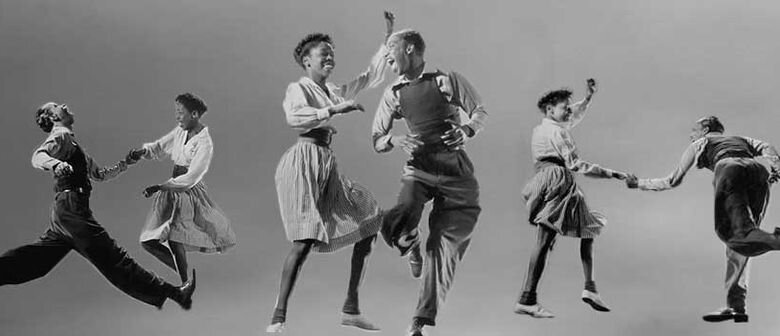Why Do Musicians Say 1234 & Dancers Say 5678?
I know it seems cliché but have you ever heard a choreographer say, "ah 5, 6, 7, 8"? But then have you ever heard a musician or bandleader say "1, 2, 3, 4"? Maybe you've even heard these two different count offs for the exact same song?!? Well as a music teacher and swing dancer I decided to write this article to explain why this is.
Most western music is 4/4 time, which means when musicians count off the song you say, "1, 2, 3, 4". Many dance styles, like Lindy Hop, are an 8 count dance. This means it takes 8 beats to make it through the steps. To save time choreographers count the last four beats, "5, 6, 7, 8". In short, musicians count in groups of 4, dancers count in groups of 8.

What is a time signature in music?
Time signatures in Western music refer to the notation used to indicate the meter of a piece of music. They are typically represented by two numbers, one stacked on top of the other, and are written at the beginning of a piece of music or a section within a piece of music. The top number indicates the number of beats per measure, while the bottom number indicates the type of note that represents one beat.
The most common time signature in Western music is 4/4, also known as common time. In 4/4, there are four quarter notes per measure, and a quarter note is the beat. Other common time signatures include 3/4, which is often used in waltzes, and 6/8, which is often used in marches and folk music.
Ex: 4/4 Time Build Me Up Buttercup - The Foundations.
Ex. 3/4 Time Voices of Spring Waltz
When you listen to this Strauss waltz it makes you say "1, 2, 3" over and over again. That's how you know it's in 3/4.
Ex 6/8 Time House Of The Rising Son - The Animals
In addition to these common time signatures, there are many others that are used in Western music. 5/4, 7/8, and 9/8 are all examples of time signatures that are less commonly used, but can add unique rhythms and meters to a piece of music.
*Ex 5/4 Time **Take Five - Dave Brubeck Quartet
Ex 7/8 Time Money - Pink Floyd
One of the interesting things about time signatures is that they don’t always dictate the exact rhythm of a piece of music. Musicians often use syncopation, which is the displacement of a strong beat, to create unexpected rhythms within a piece of music. This can make a piece of music with a simple time signature feel more complex and interesting. If you want to learn more about music take some music lessons in Ann Arbor.
One of the most important things to keep in mind when working with time signatures is that the purpose of a time signature is to provide a consistent and regular pulse throughout the piece of music. This helps the musicians stay together and also makes it easier for listeners to follow the music.
Different Dance Styles
The United States is known for its diverse culture, and this diversity is reflected in the many different types of dance styles that have developed and become popular over the years. From ballroom dancing to hip-hop, there is a dance style for everyone in the USA. Here are some of the most popular dance styles in the USA:
Ballroom dancing: Ballroom dancing is a style of partner dancing that originated in the late 19th and early 20th centuries. It includes a variety of dance styles such as the waltz, tango, foxtrot, and cha-cha. Ballroom dancing is often seen as a formal and elegant style of dance, and it is often performed in competitions and at formal events such as weddings.
Jazz: Jazz is a style of dance that originated in the African American communities in the late 19th and early 20th centuries. It is characterized by its improvisational nature and the use of syncopated rhythms. Jazz dance has evolved over the years to include a variety of sub-styles such as street jazz, contemporary jazz, and lyrical jazz.
Tap: Tap dancing is a style of dance that involves the use of metal plates on the dancer's shoes, which create a percussive sound when they strike the floor. It originated in the 19th century and has been popularized by many famous dancers such as Fred Astaire and Gene Kelly. Tap dancing is often seen as a lively and energetic style of dance that is perfect for showing off a dancer's rhythm and timing.
Hip-hop: Hip-hop is a style of dance that originated in the African American communities in the 1970s. It is characterized by its use of street dance moves such as breakdancing, popping, and locking. Hip-hop is a very expressive style of dance that is often used to tell a story or convey a message. It is also a very popular style of dance among young people and is often performed to hip-hop music.
Salsa: Salsa is a style of dance that originated in Cuba and Puerto Rico in the late 19th century. It is a lively and passionate style of dance that is characterized by its use of quick, sharp movements and its syncopated rhythms. Salsa is often performed to Latin music and is a popular style of dance at Latin-themed parties and events.
Swing: Swing dancing is a style of dance that originated in the 1920s and 30s. It is characterized by its use of fast-paced, energetic movements and its syncopated rhythms. Swing dancing is often performed to jazz and big band music, and it is a popular style of dance at swing dance events and festivals.
Country Western: Country Western dancing is a style of dance that originated in the rural American South, it is characterized by its use of simple, down-home steps and moves, often accompanied by country and western music. It includes a variety of dance styles such as line dancing, two-step, and the waltz.
I hope you learned a little about time signatures and about different dance styles. I really loved writing this articles and it's fun to combine two of my loves, music and dance. Thanks for reading all the way to the end of the article! :)



